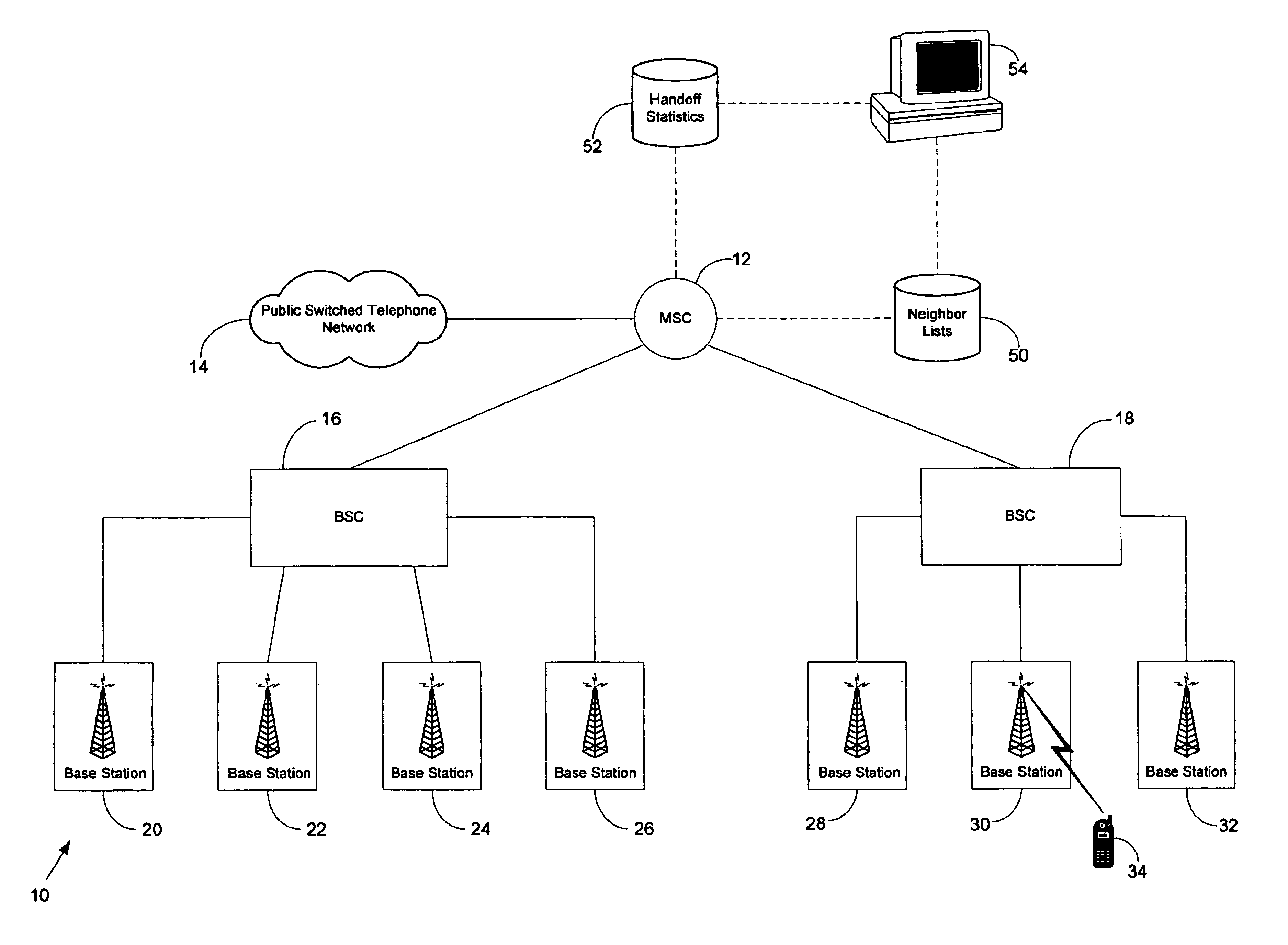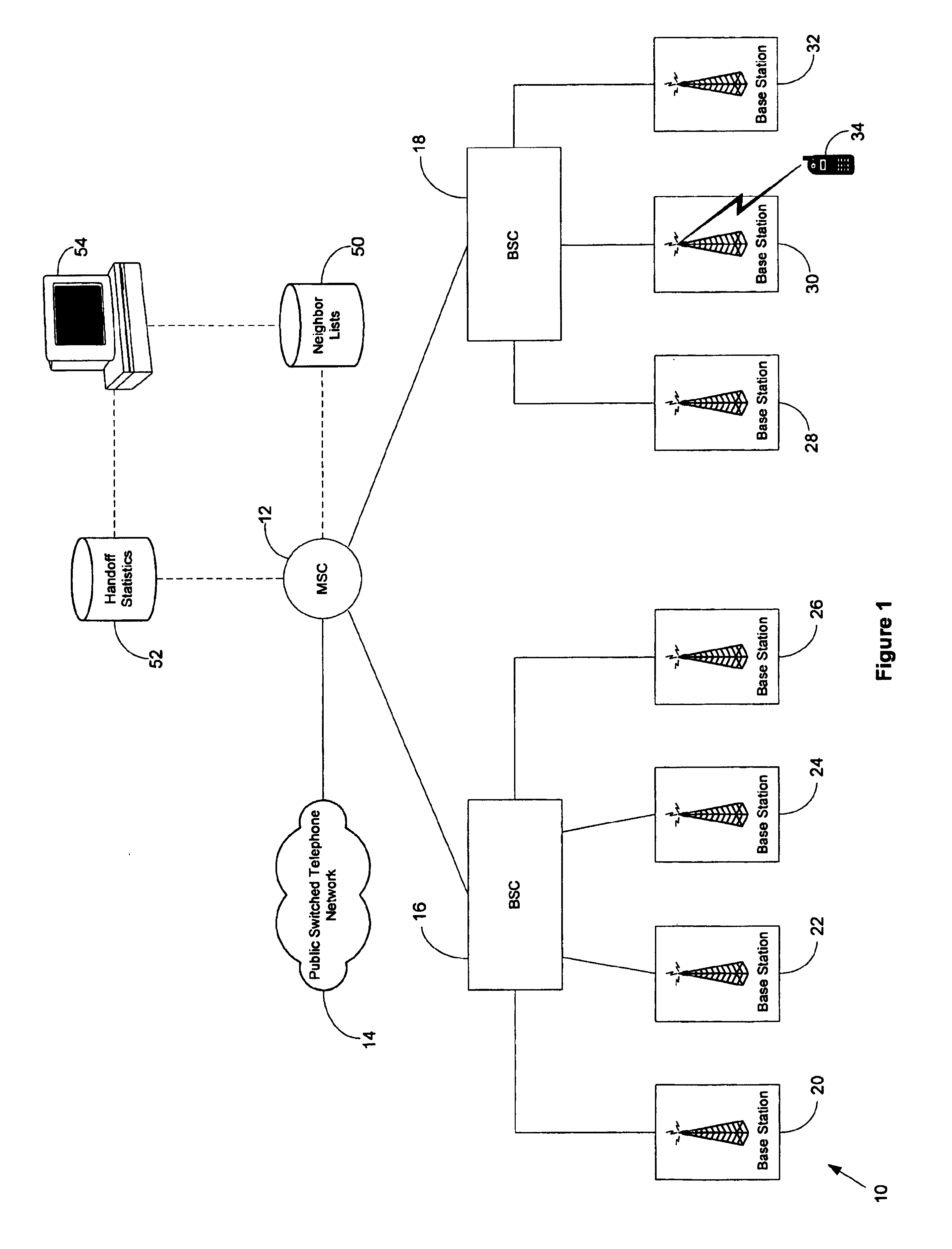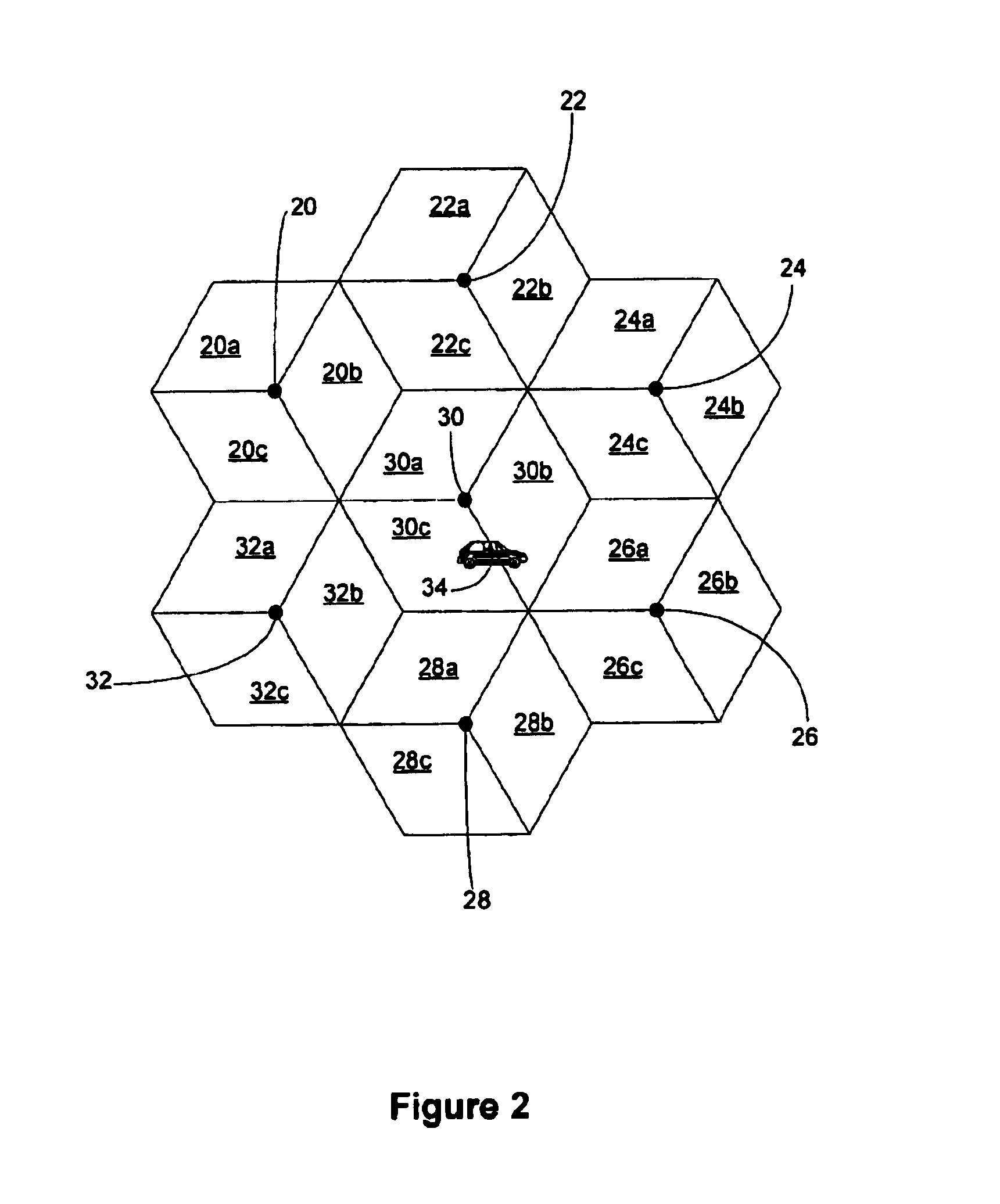Method of tuning handoff neighbor lists
a neighbor list and handoff technology, applied in the field of wireless telecommunications networks, can solve the problems of unnecessary cellular system resources, call droppage, and inability to optimize the neighbor set in general
- Summary
- Abstract
- Description
- Claims
- Application Information
AI Technical Summary
Benefits of technology
Problems solved by technology
Method used
Image
Examples
Embodiment Construction
[0024]FIG. 1 shows a functional block diagram of an exemplary wireless telecommunications network 10 in which the present invention can be used. In FIG. 1, logical connections and signaling pathways are represented by dashed lines, and circuit-switched connections for voice, data, and other traffic are represented by solid lines. As shown in FIG. 1, network 10 includes a mobile switching center (MSC) 12 that is connected to public switched telephone network (PSTN) 14 and to base station controllers (BSCs) 16 and 18. BSC 16 is, in turn, connected to base stations 20-26, and BSC 18 is, in turn, connected to base stations 28-32. Although FIG. 1 shows MSC 12 connected to two BSCs, and shows each BSCs 16 connected to three or four base stations, in general, MSC 12 may be connected to a greater or fewer number of BSCs, and each BSC may be connected to a greater or fewer number of base stations. Network 10 may also include more than one MSC, with each MSC typically connected to a plurality...
PUM
 Login to View More
Login to View More Abstract
Description
Claims
Application Information
 Login to View More
Login to View More - R&D
- Intellectual Property
- Life Sciences
- Materials
- Tech Scout
- Unparalleled Data Quality
- Higher Quality Content
- 60% Fewer Hallucinations
Browse by: Latest US Patents, China's latest patents, Technical Efficacy Thesaurus, Application Domain, Technology Topic, Popular Technical Reports.
© 2025 PatSnap. All rights reserved.Legal|Privacy policy|Modern Slavery Act Transparency Statement|Sitemap|About US| Contact US: help@patsnap.com



